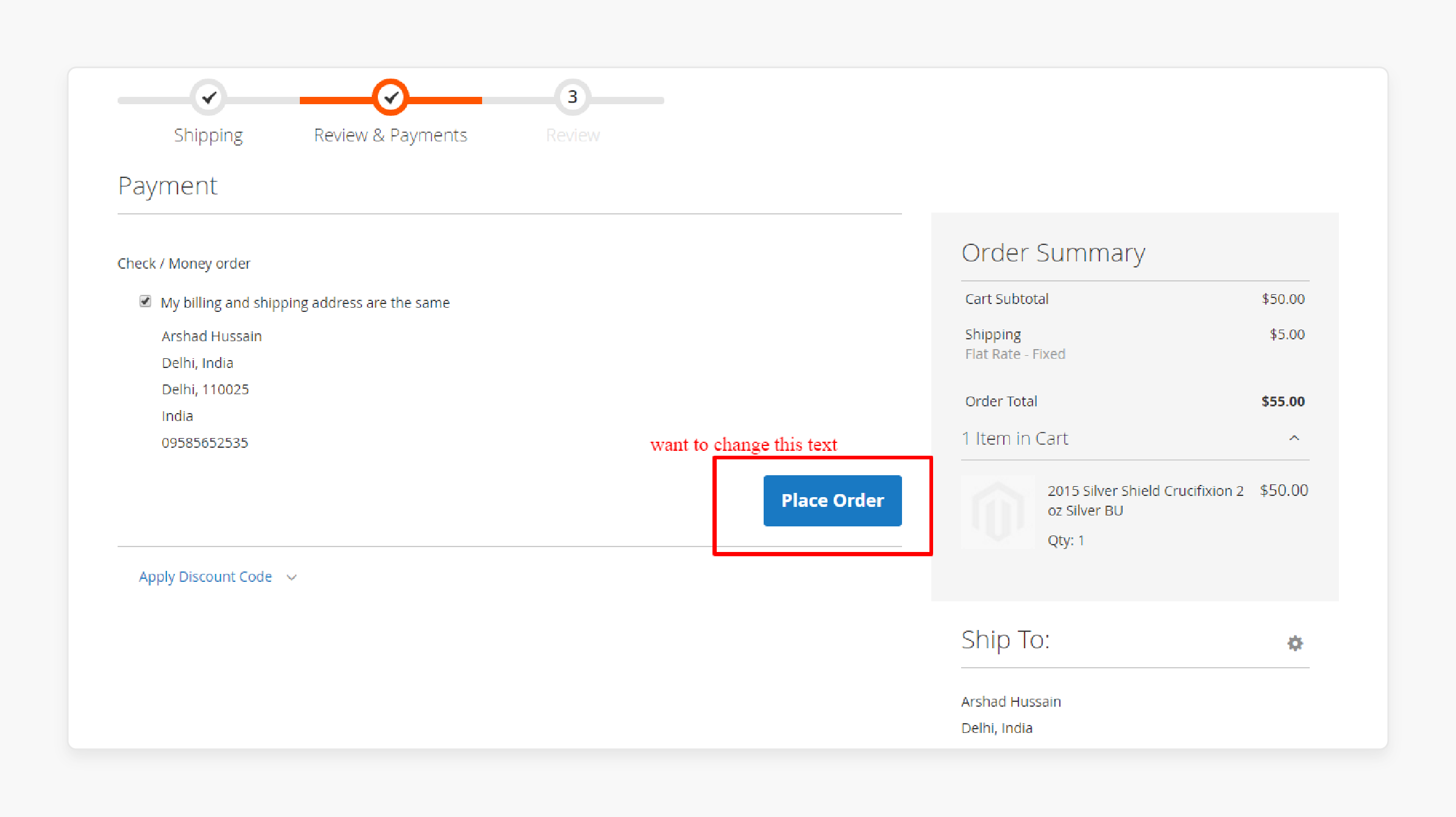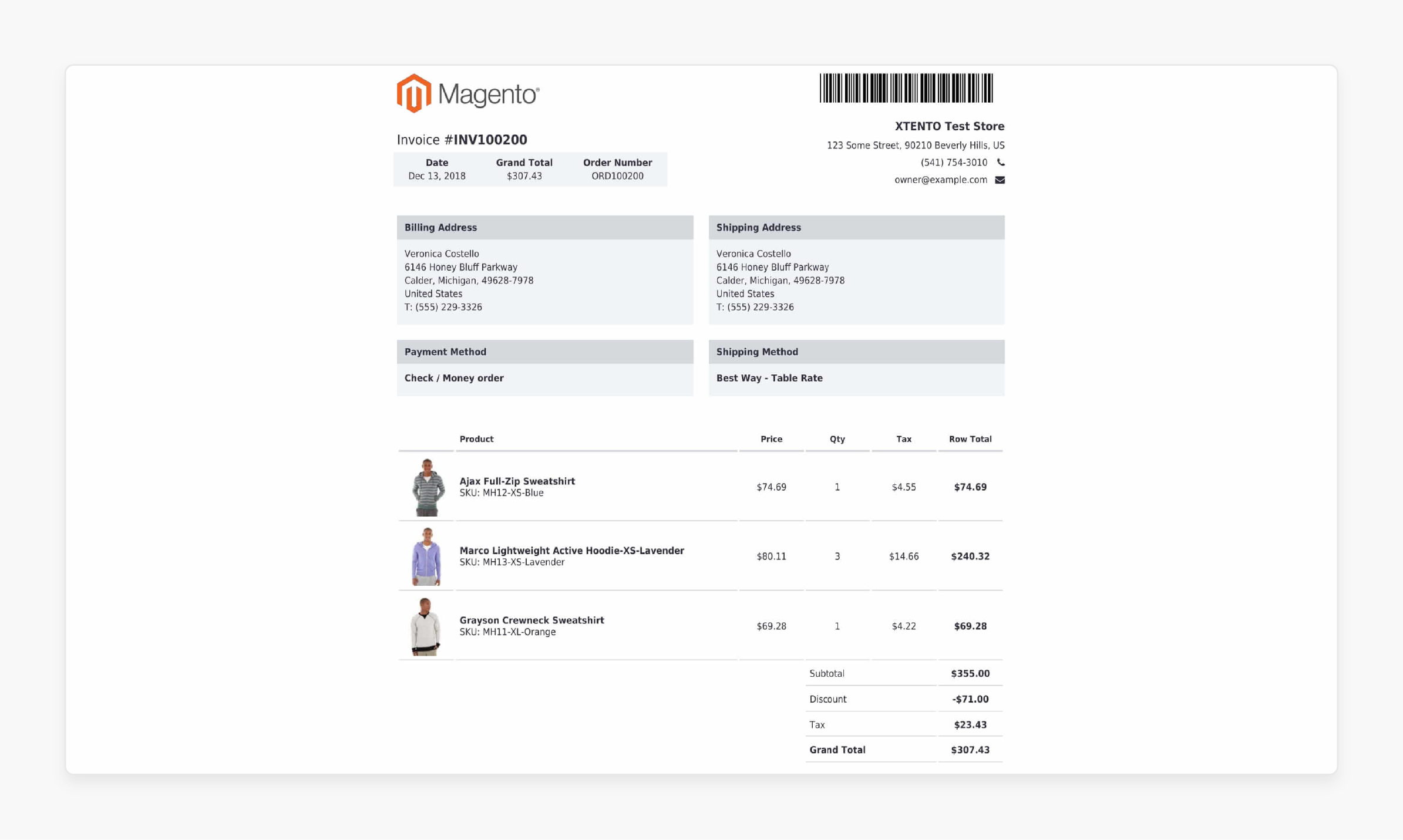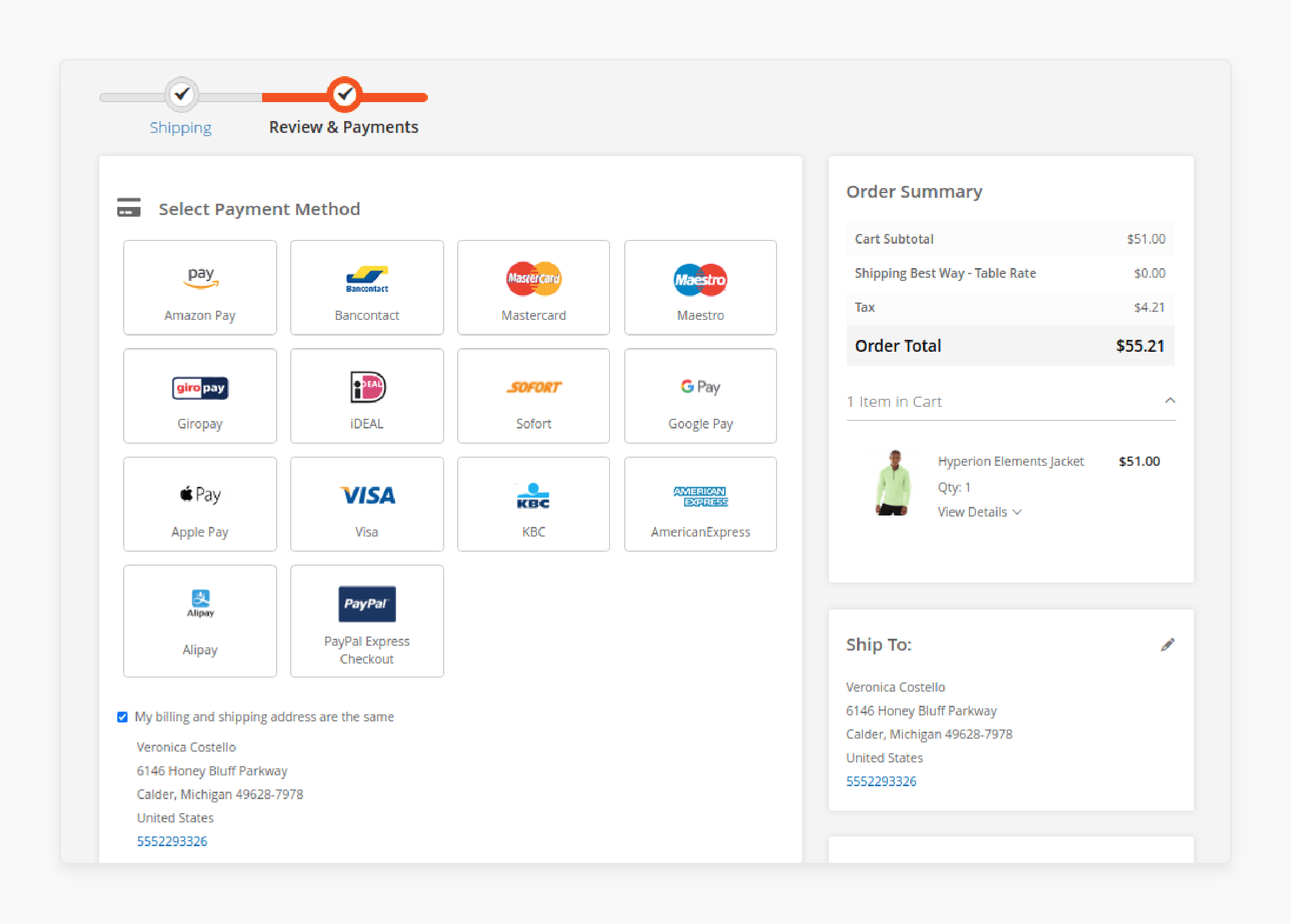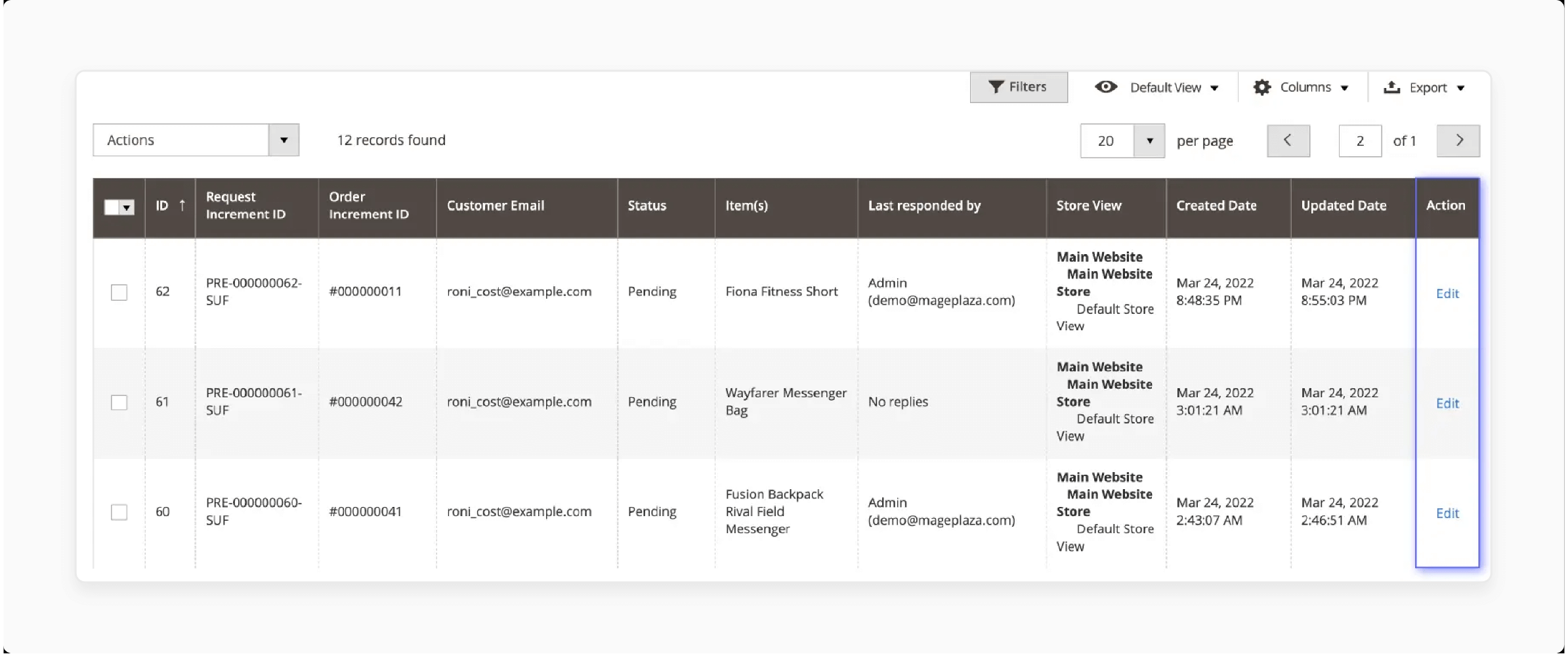
15 Future Trends in Magento 2 Order Processing Workflow
How smooth is your order processing workflow? The Magento 2 order processing workflow is key for eCommerce success. It helps manage orders and ensure timely deliveries. This article covers the 15 future trends to optimize your order processing workflow.
Key Takeaways
-
Overview of Magento Order Processing Workflow
-
Components of Order Processing Workflow of a Magento Store
-
How to Optimize Order Status Workflow in Your E-commerce Stores
-
Future Trends in Magento Order Processing Workflow
-
Order & Account Information in Order Processing Workflow of Magento Stores
-
Order & Account Information in Magento 2 Order Processing Workflow
-
Common Challenges in Magento 2 Order Processing Workflow & Their Solutions
What is Magento 2 Order Processing Workflow?
Magento 2 order processing workflow handles orders from start to finish. When a customer places an order, it is marked as Pending. At this stage, payment has not been processed.
The order can be edited or canceled until the payment is confirmed. After payment is authorized, the status changes to Processing. In this state, you cannot cancel the order, but you can still edit the billing and shipping address.
Once payment is confirmed, Magento generates an invoice for the order. If the payment is captured, the system automatically creates the invoice. After invoicing, the order moves to the shipment stage. The status changes to Complete when the shipment is processed and sent to the customer. This workflow ensures that each order is tracked, invoiced, and shipped efficiently.
Components of Magento Order Processing Workflow
1. Order Placement

The first step is order placement. It begins when a customer adds items to their cart. The customer proceeds to checkout and selects a shipping and payment method. Once confirmed, Magento creates a sales order. The order status is set to Pending until the payment is processed.
2. Payment Processing
The next step is payment processing. The order remains in Pending until payment is confirmed. After authorization, the order status changes to Processing. Magento supports multiple payment options like credit cards, PayPal, and bank transfers. Payment methods can be configured for capture or authorization modes.
3. Invoicing

After payment, the invoicing process starts. Magento generates an invoice for the order. The invoice includes details like items, taxes, and totals. If the payment is captured, the system generates the invoice automatically. Orders using store credit or gift cards may need manual invoicing. Once invoiced, the order proceeds to shipment.
4. Shipment Processing
The next step is shipment processing. After invoicing, the order is prepared for delivery. Magento generates a packing slip and shipping label. If tracking numbers are used, customers receive shipment notifications. The status updates to Complete when the shipment is dispatched.
5. Order Completion
The final step is order completion. Once the shipment is delivered, the order status is marked as Complete. Customers can reorder the same items if needed. Admins can view order history and add comments to the order. This step concludes the order workflow.
Future Trends in Order Processing Workflow in Magento 2
| Trend | Explanation |
|---|---|
| 1. AI-Powered Order Management | AI automates order tracking and inventory updates. It predicts stock needs and reduces errors. AI tools improve delivery estimates and order accuracy. They adapt to changing demands quickly. It makes order processing faster. |
| 2. Real-Time Order Tracking | Customers get live updates on shipment status. Integration with carriers enables accurate location details. Notifications show order progress instantly. Real-time updates improve transparency. It builds customer trust. |
| 3. Automated Invoice Generation | Magento generates invoices after payment confirmation. Automation saves time and reduces errors. Bulk orders are processed efficiently. Instant invoices speed up workflows. Manual effort is minimized. |
| 4. Blockchain in Order Processing | Blockchain secures transaction data with a decentralized ledger. It tracks every transaction transparently. Businesses prevent fraud and ensure data integrity. It improves system reliability. Blockchain adoption is growing in eCommerce. |
| 5. Improved API Integrations | APIs connect Magento with payment gateways and shipping providers. They enable faster order updates. Integration with third-party tools becomes seamless. APIs improve workflow and reduce delays. Businesses rely on them for multi-channel orders. |
| 6. Mobile-Optimized Admin Panels | Mobile dashboards allow order management on the go. Admins can edit and update orders from mobile devices. Real-time notifications improve response times. Mobile panels speed up workflows. This trend supports faster decisions. |
| 7. Personalized Customer Notifications | Notifications update customers about their order status. Messages include payment confirmation and tracking details. Personalization keeps communication relevant. Timely updates boost customer satisfaction. Customers feel more connected. |
| 8. Advanced Fraud Detection | Fraud tools monitor payment activities in real-time. AI flags high-risk orders instantly. These tools reduce financial losses. Businesses protect their systems and customers. Fraud prevention is becoming more accurate. |
| 9. Cloud-Based Order Processing | Cloud platforms store order data securely. Admins access data from anywhere. These systems handle peak demands easily. Updates and maintenance occur faster. Cloud solutions improve scalability. |
| 10. Omnichannel Order Integration | Magento syncs orders across all sales channels. Online and in-store orders are managed together. Customers experience unified service. Businesses track inventory in real-time. It improves flexibility and efficiency. |
| 11. Voice-Assisted Order Management | Voice commands simplify order management. Tools like Alexa help view and update orders quickly. Admins reduce manual effort by speaking commands. It saves time and speeds up workflows. Voice technology is gaining traction. |
| 12. Predictive Analytics | Analytics predict order trends and customer behavior. Businesses plan inventory based on data. Seasonal demand is managed better. Predictions improve stock management. It reduces processing delays. |
| 13. Sustainable Shipping Options | Customers prefer green shipping methods. Magento supports carbon-neutral delivery and recyclable packaging. Sustainable options attract more customers. They reduce environmental impact. Eco-friendly shipping is a growing trend. |
| 14. Seamless Returns Management | Magento integrates tools to handle order returns easily. Customers get quick refunds or replacements. Automation speeds up the return process. Fewer errors improve customer satisfaction. Magento returns workflows to become more efficient. |
| 15. Dynamic Tax and Currency Support | Magento adjusts taxes and currency based on location. Real-time updates simplify global orders. Customers see accurate pricing at checkout. Businesses manage international transactions smoothly. It enhances the shopping experience. |
Order & Account Information in Magento 2 Order Processing Workflow
1. Order Information
| Field | Description |
|---|---|
| Order Number | Shows the order number at the top of the sales order. Indicates if the confirmation email was sent. |
| Order Date | Displays the date and time when the order was placed. |
| Purchased From | Indicates the website, store, and store view where the order originated. |
| Placed from IP | Shows the IP address of the device used to place the order. |
| Order Placed from Quote | For Adobe Commerce B2B, shows the quote linked to the order, if applicable. The quote name is clickable. |
2. Account Information
| Field | Description |
|---|---|
| Customer Name | Shows the name of the buyer who placed the order. Links to the customer profile. |
| Displays the email address of the buyer. The email is linked to open a new message. | |
| Customer Group | Identifies the customer group or shared catalog assigned to the buyer. |
| Company Name | For Adobe Commerce B2B, shows the company associated with the buyer. Links to the company profile. |
How to Optimize Your Order Status Workflow in Magento 2?
1. Streamline Payment Methods

Offer multiple payment options to cater to customer preferences. Configure automatic authorization or capture to reduce delays. Ensure payment gateways integrate seamlessly with Magento. Regularly test payment workflows to identify bottlenecks. Efficient payment handling speeds up order processing.
2. Automate Invoice Generation
Use Magento’s settings to automate invoices after payment confirmation. Automating reduces manual effort and errors. Automation ensures faster processing for bulk orders. Check that invoice emails reach customers promptly. Automated invoicing improves efficiency and accuracy.
3. Use Real-Time Tracking
Integrate real-time tracking with your shipping carriers. Provide customers with instant shipment updates. Notify them about status changes via email or SMS. Use tracking to monitor delivery timelines. Real-time updates build trust and enhance customer satisfaction.
4. Implement Bulk Order Management
Handle bulk orders efficiently by enabling batch processing. Use Magento’s tools to process invoices and shipments in groups. Automating bulk tasks reduces time on individual orders. Bulk workflows are ideal for peak shopping seasons. They keep operations running smoothly.
5. Enhance Fraud Detection
Use Magento’s tools to flag high-risk transactions. Enable fraud detection in payment integrations. Monitor unusual activities like mismatched billing and shipping addresses. Preventing fraud protects your business and improves order security. Customers feel safer shopping with you.
6. Optimize Shipping Settings
Configure shipping methods based on order types and regions. Enable automatic creation of packing slips and shipping labels. Offer options like expedited and eco-friendly delivery. Use tracking numbers for seamless tracking. Well-optimized shipping ensures timely deliveries.
7. Simplify Returns Management

Use Magento’s tools to streamline returns workflows. Enable quick generation of return labels and refund approvals. Automate notifications for customers about return status. Simplified returns improve satisfaction and loyalty. Efficient returns processes reduce delays.
8. Customize Notifications
Send personalized notifications for every stage of the order. Inform customers about payment, shipment, and delivery updates. Use Magento to customize email templates. Ensure messages are clear and concise. Regular updates reduce support queries.
9. Leverage Predictive Analytics
Use analytics tools to forecast inventory needs and trends. Plan for seasonal peaks and optimize stock levels. Predictive insights help you handle demand effectively. Data-driven decisions improve processing speed. Analytics minimize overstocking or understocking.
10. Adopt Mobile-Friendly Admin Panels
Enable admins to manage orders from mobile dashboards. Use mobile apps for editing and updating orders quickly. Instant notifications ensure faster responses to issues. Mobile tools improve admin efficiency and decision-making. They help manage workflows on the go.
11. Enable Omnichannel Integration
Integrate Magento with online and offline channels. Sync orders from marketplaces, websites, and physical stores. Ensure real-time inventory updates across platforms. Omnichannel workflows provide a seamless experience. Businesses can manage orders more efficiently.
12. Use Cloud-Based Solutions
Move Magento order management to a cloud platform. Cloud systems offer better uptime and scalability. Admins can access order data from any location. Cloud solutions handle peak traffic smoothly. They provide faster updates and improved reliability.
13. Focus on Sustainable Practices
Offer eco-friendly shipping options to customers. Use recyclable packaging and support carbon-neutral deliveries. Highlight your commitment to sustainability in notifications. Customers appreciate businesses that focus on the environment. Sustainable practices enhance brand reputation.
14. Enable Easy Order Edits
Allow admins to edit Pending orders for corrections. Magento’s order edit feature fixes errors in addresses or items. Updating orders reduces cancellations and improves the customer experience. Limit editing to authorized users for control. Flexibility ensures smoother workflows.
15. Train Your Team Regularly
Train staff to use Magento features efficiently. Focus on areas like invoicing, shipping, and returns. Regular training improves accuracy and reduces processing time. Update materials when Magento releases new features. A skilled team ensures an optimized workflow.
Common Challenges in Magento 2 Order Processing Workflow & Their Solutions
1. Delayed Payment Processing
-
Challenge: Payments fail to process promptly, causing order delays.
-
Solution: Configure payment methods for automatic capture. Enable real-time payment validation in Magento settings. Integrate reliable payment gateways for faster processing. Regularly test payment workflows to identify errors. Provide customers with alternative payment options.
2. Manual Invoice Errors
-
Challenge: Manual invoicing increases the risk of mistakes.
-
Solution: Use Magento’s tools to automate invoice generation. Set up email notifications to confirm invoice delivery. Review invoice templates for accuracy and clarity. Test the automation process regularly. Train staff on handling invoice-related issues.
3. Shipping Delays
-
Challenge: Orders face delays in shipment and delivery.
-
Solution: Use real-time tracking integrations with shipping carriers. Automate the generation of shipping labels and packing slips. Offer multiple shipping options for flexibility. Notify customers of shipment updates promptly. Plan for peak seasons to avoid shipping backlogs.
4. Fraudulent Transactions
-
Challenge: Fraudulent orders disrupt workflow and harm revenue.
-
Solution: Enable Magento’s fraud detection tools. Monitor orders for unusual billing and shipping mismatches. Use payment gateways with fraud protection features. Set thresholds to flag high-risk transactions. Regularly review flagged orders to avoid false positives.
5. Order Management for Bulk Orders
-
Challenge: Managing bulk orders manually takes time and causes errors.
-
Solution: Enable batch processing for bulk order handling. Use automation for invoicing and shipment processing. Optimize system performance to handle large order volumes. Assign dedicated staff for high-volume order management. Schedule regular system checks during peak times.
6. Customer Communication Issues
-
Challenge: Lack of timely updates causes dissatisfaction.
-
Solution: Send personalized notifications for order status updates. Automate notifications for payment, shipment, and delivery stages. Use clear and concise email templates. Provide customers with a tracking link for real-time updates. Ensure customer service is available for order inquiries.
7. Returns and Refund Delays
-
Challenge: Handling returns and refunds takes too long.
-
Solution: Use Magento’s returns management tools. Automate the generation of return labels. Notify customers of refund progress. Streamline workflows to process returns faster. Train staff on handling returns efficiently.
8. Stock Management Issues
-
Challenge: Incorrect stock levels disrupt order fulfillment.
-
Solution: Integrate Magento with inventory management systems. Enable real-time inventory tracking for accuracy. Use predictive tools to forecast stock demand. Regularly audit inventory for discrepancies. Sync inventory across all sales channels.
9. Order Edit Limitations
-
Challenge: Orders in certain statuses cannot be edited.
-
Solution: Allow edits only for Pending orders. Use Magento’s order edit feature for corrections. Train staff to identify orders that can be edited. Notify customers of changes made to their orders. Limit editing permissions to authorized users.
10. International Order Challenges
-
Challenge: Processing global orders can be complex.
-
Solution: Configure taxes and currencies for different regions. Enable real-time tax calculation tools. Use reliable shipping partners for global deliveries. Offer multi-language support for order communications. Ensure compliance with local regulations.
FAQs
1. What is the new order status in Magento 2?
The new order status appears when a customer places an order. It shows pending payment until the payment is processed. Once the payment is confirmed, the order moves to Magento 2 order management.
2. How do I create an invoice for an order in Magento 2?
To create an invoice, go to the order grid. Find the pending payment order and click on "Create Invoice." Magento will generate the invoice, and the order status will change.
3. Can I edit order details after payment is confirmed?
You can edit order details only if the status is pending payment. Once payment is processed, the order becomes order within the processing stage, and you cannot edit it.
4. What is the credit memo in Magento 2?
A credit memo is used for returning items or adjusting the order total. It reflects any Magento refunds given for the order. The credit memo also updates the order and account balance.
5. How does Magento order processing work?
In Magento order processing, orders move through stages: pending payment, invoicing, and shipment. Each step is tracked in the order flow until the order is fulfilled and completed.
6. What is the Magento order fulfillment process?
The Magento order fulfillment process includes creating invoices, generating shipment labels, and dispatching the order. The order fulfillment process ensures the order within reaches the customer accurately.
7. How can I track an order total in the Magento order grid?
In the order grid, you can view the order total for each order. It includes the total amount paid, taxes, and discounts. It, with dedicated Magento hosting, helps track any changes in the payment information or custom order modifications.
Summary
Optimizing your Magento 2 order processing workflow can improve efficiency and customer satisfaction. Key benefits are:
-
Improved Order Accuracy: Reduce errors and streamline transactions.
-
Faster Order Fulfillment: Speed up the process for quicker deliveries.
-
Better Customer Satisfaction: Build trust with timely updates and accurate orders.
-
Streamlined Operations: Automate tasks to boost productivity.
Consider managed Magento hosting to optimize order processing of Magento stores.








